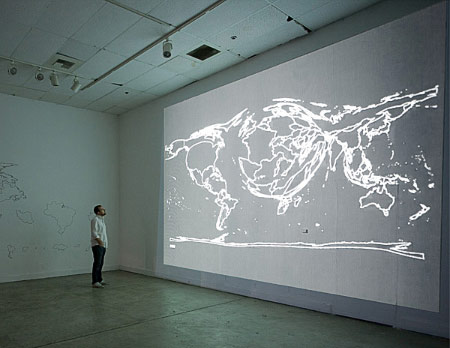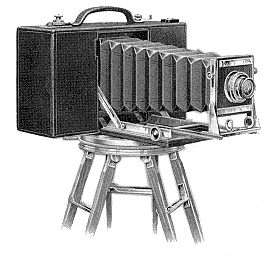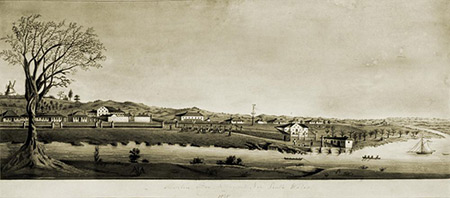Marking time in March 2009
Geohistoriography
Artist Tim Schwartz illustrates on his website his installation piece Geohistoriography.This show captures how America views the world as seen through the lens of the American media. All data was collected from the New York Times, namely the number of articles written about a certain country for each year.
The two wall drawings are representations of the 2008 state of America’s view of the world. In one piece countries were morphed and expanded or contracted if they were written about more or less than average. In the pyramid piece, countries were organized in a ranked fashion depending on this same data.
The animation shows how America’s perspective changed over the last 150 years.

Panoramic Queensland
The other day I went to the State Library of Queensland to see Panoramic Queensland, an exhibition of panoramic photographs from the John Oxley Library collection. This is a fine showing of several dozen panoramas of Brisbane and other Queensland places.
There is an excellent catalogue—nicely printed on heavy stock in panoramic format with good quality reproductions, with foldouts, with an interesting introduction by curator Stephanie Lindquist, and it’s free for the taking.
Panorama photographs are wonderful things, spacious and full of detail. If I had to choose just one, my favourite in the exhibition shows a freshly-built Victoria Bridge on a quiet misty morning around 1874. It’s a big, sweeping picture with wonderful repetitive elements combined with quirky details. There are no people in it, but I can feel their presence—I know that all those rivets were peened and pounded by men with heavy hammers.

The exhibition is good, in parts. Call me grumpy, but I must mention some missed opportunities and things that didn’t work as well as they should.
Lighting: The light level in the exhibition is low, as it should be. But I was annoyed that lights behind me cast my shadow onto the works on the wall, and shadows made it hard to see items in the display cases. Some lights need to be shifted.
Noise loop: A seven minute video about the exhibition by librarian Simon Farley plays constantly in the exhibition space, filling the room with distracting noise. The spiel gets annoying on the fourth hearing.
Cameras etc.: Four panoramic cameras were on display, trapped in display cases without their tripods, with labels that identified each camera more or less correctly (I thought the misspelling of the name of the Cirkut camera was unfortunate). These token display pieces alerted me to the missed opportunity to interpret the evidence in each of the panoramas of the technical methods used in their production.

Before and since: The material on show begins with an 1862 series of photographs taken from the windmill, and ends with a digital print of the corresponding view in 2008. Stephanie Lindquist’s short catalogue essay introduces the work of pre-photography panorama painters, and refers to Bowerman’s 1835 watercolour of Brisbane—There can be little doubt that early Queensland settlers had some knowledge of the panoramic tradition. … The first signed and dated painting of the Moreton Bay colony was in fact a panorama by Commissariat Officer Henry Boucher Bowerman, a trained topographical artist—but this picture was not included in the exhibition, surely an opportunity missed. And in the present time, when the use of photographic film has dwindled away, the exhibition misses the chance to interpret recent digital developments in panorama photography.
